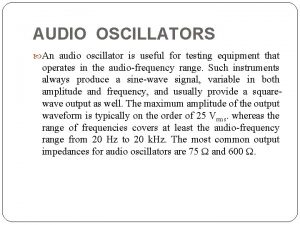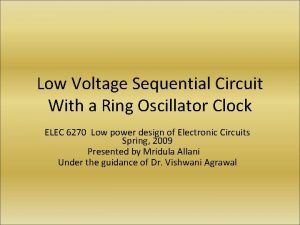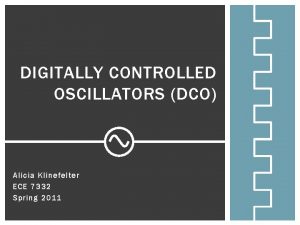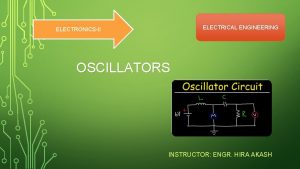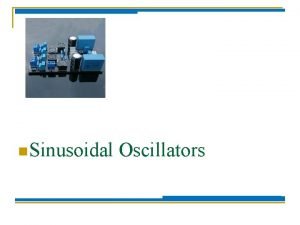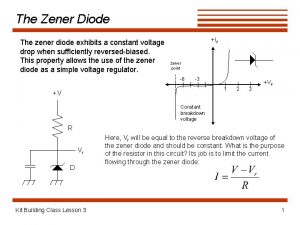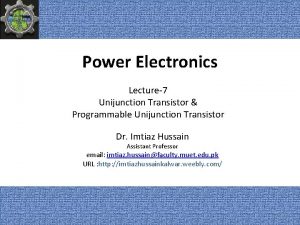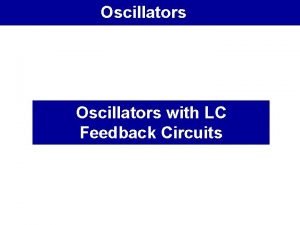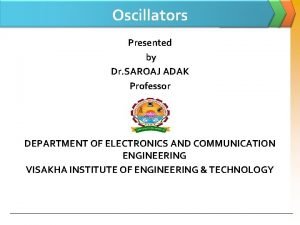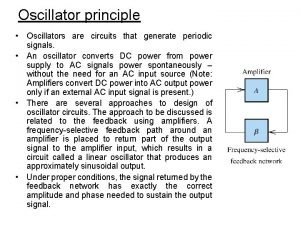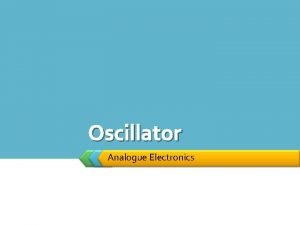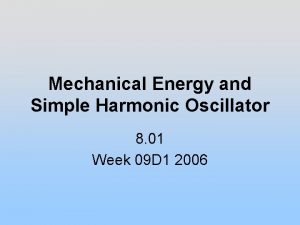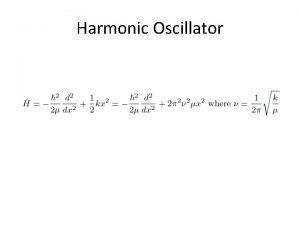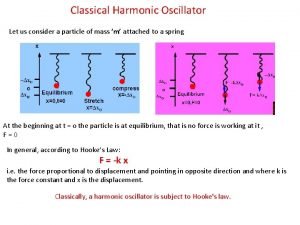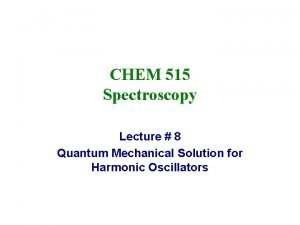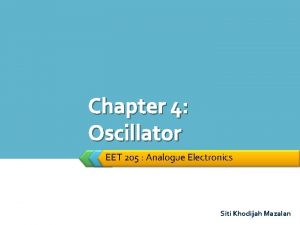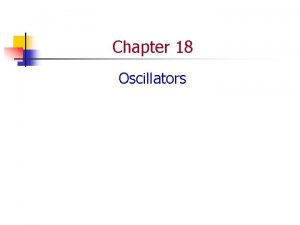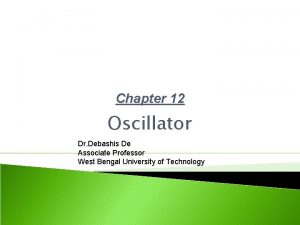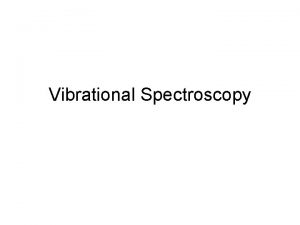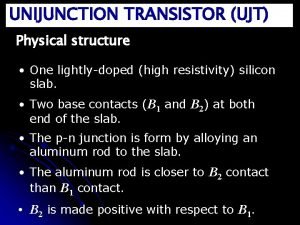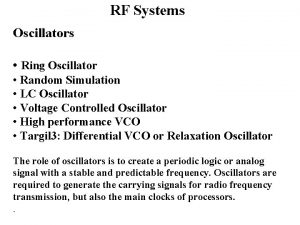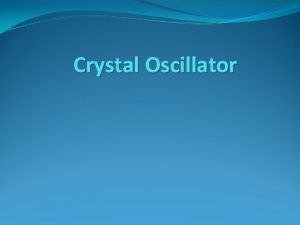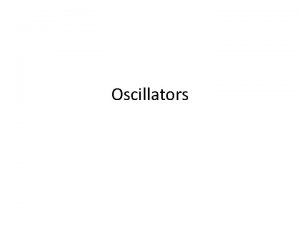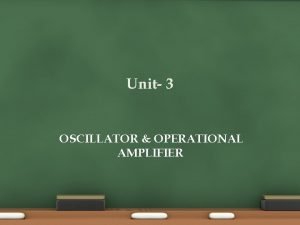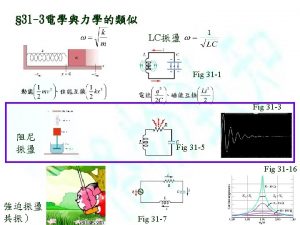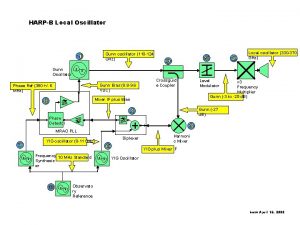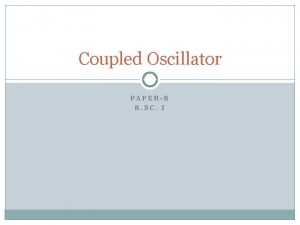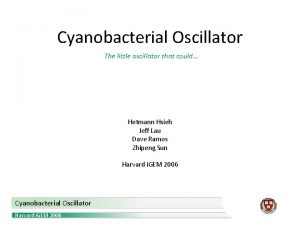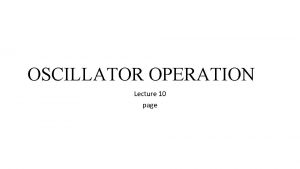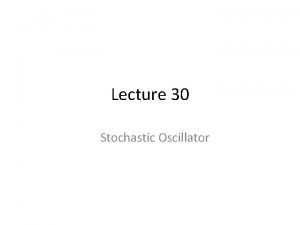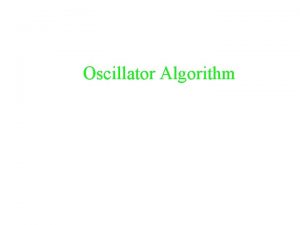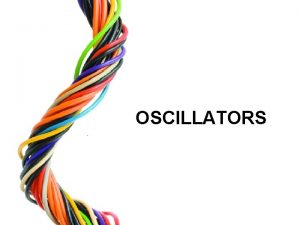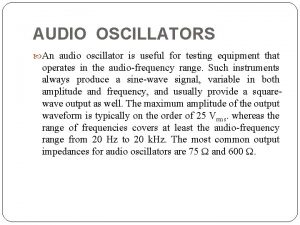Chapter 18 Oscillators Oscillators n n Oscillator An





















- Slides: 21

Chapter 18 Oscillators

Oscillators n n Oscillator – An ac signal generator. A circuit that converts dc to a sinusoidal (or other) waveform. Oscillators use positive feedback to produce an output waveform. n Positive feedback – A type of feedback signal that is in phase with the circuit input signal.

Oscillators: The Basic Idea n n n The signal source produces the waveforms shown. When the source is removed, the circuit loop continues to produce an output. Because positive feedback generates an input signal, it is also called regenerative feedback.

The Barkhausen Criterion n n Barkhausen criterion – The relationship between the circuit feedback factor (av) and voltage gain (Av) required for proper oscillator operation. The Barkhausen criterion states that oscillations can be sustained only when

The significance of av. Av n When av. Av < 1, the circuit experiences damping. n n n Damping – The fading out of oscillations over some number of cycles. When av. Av > 1, the circuit output is driven into saturation and cutoff clipping. When av. Av = 1, the circuit output remains at a stable amplitude.

Phase-Shift Oscillators n Phase-shift oscillator – An oscillator that uses three RC circuits in its feedback network to produce a 180° phase shift. n The combined phase shifts of the op-amp and the feedback network is 360° (or 0°)

Stability n Oscillator stability – A measure of an oscillator’s ability to maintain constant output amplitude and frequency. n The phase-shift oscillator is rarely used because it is relatively unstable.

Wien-Bridge Oscillators n Wien-bridge oscillator – An oscillator that achieves regenerative feedback by producing no phase shift at its resonant frequency.

Frequency Response of the Positive Feedback Path n The positive feedback path acts as a band-pass filter.

Circuit Gain n The gain of the Wienbridge oscillator is determined by the components in the negative feedback path.

The Colpitts Oscillator n Colpitts oscillator – An oscillator that uses a pair of tapped capacitors and an inductor to produce a 180° voltage phase shift in the feedback network.

Colpitts Oscillator Feedback Network n The amplifier output voltage is developed across C 1. The feedback voltage is developed across C 2. n The capacitor voltages are 180° out of phase. n

Transformer-Coupled Colpitts Oscillator

The Hartley Oscillator n Hartley oscillator – An oscillator that uses a pair of tapped inductors and a capacitor to produce a 180° voltage phase in its feedback network.

The Clapp Oscillator n Clapp oscillator – A Colpitts oscillator with an added capacitor (in series with the feedback inductor) used to reduce the effects of transistor junction capacitance.

The Armstrong Oscillator n Armstrong oscillator – An oscillator that uses a transformer in its feedback network to achieve the required 180° voltage phase shift.

Crystal-Controlled Oscillators n Conventional oscillators can experience a change in gain or frequency due to: n n The active component being replaced. A reactive component being replaced. The circuit experiencing a change in temperature. Crystal-controlled oscillator – An oscillator that uses a quartz crystal to produce an extremely stable output frequency.

Crystals n Piezoelectric effect – The tendency of a crystal to vibrate at a fixed frequency when exposed to an electric field. n n The frequency of vibration depends on the physical dimensions of the crystal. The three crystals used in oscillators are: n n n Roshelle salt. The best piezoelectric activity, but the most fragile. Tourmaline. The toughest (physically), but the least stable vibration rate. Quartz. Good piezoelectric activity and less fragile than Roshelle salt. Also the least expensive to produce.

Quartz Crystals n n CC is the crystal capacitance CM is the mounting capacitance L is the crystal inductance R is the crystal resistance

Crystal-Controlled Colpitts Oscillator

The Pierce Oscillator
 What is audio oscillator
What is audio oscillator Low g oscillators 50low
Low g oscillators 50low Alicia klinefelter
Alicia klinefelter The figure shows four oscillators at t=0
The figure shows four oscillators at t=0 Classification of oscillators
Classification of oscillators Sinusoidal oscillators are
Sinusoidal oscillators are Zener diodes exhibit
Zener diodes exhibit Application of unijunction transistor
Application of unijunction transistor Lc feedback oscillator
Lc feedback oscillator Barkhausen criteria of oscillator
Barkhausen criteria of oscillator Oscillator principle
Oscillator principle Types of oscillator
Types of oscillator Simple harmonic motion formula
Simple harmonic motion formula Selection rule for harmonic oscillator
Selection rule for harmonic oscillator Classical harmonic oscillator
Classical harmonic oscillator Morse potential
Morse potential Oscillator analog electronics
Oscillator analog electronics Barkhausen criteria of oscillator
Barkhausen criteria of oscillator Barkhausen criteria of oscillator
Barkhausen criteria of oscillator Which is lossen rearrangement reaction
Which is lossen rearrangement reaction Ujt transistors
Ujt transistors Ring oscillator simulation
Ring oscillator simulation
